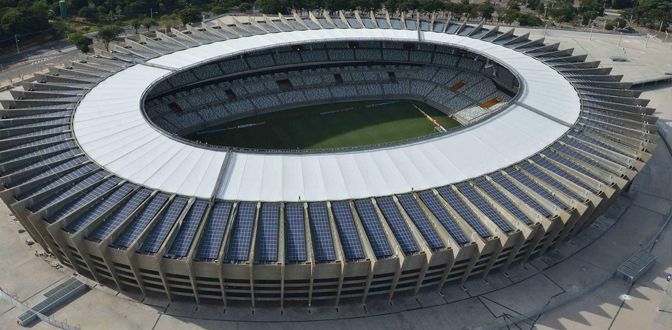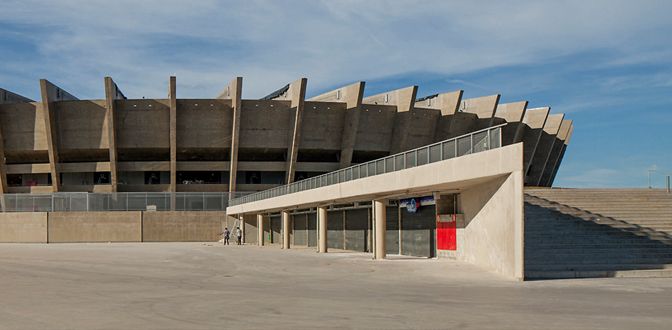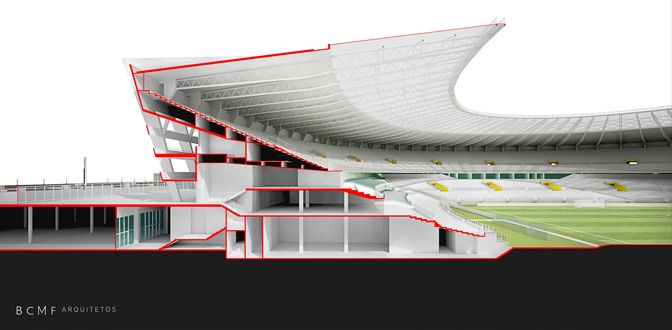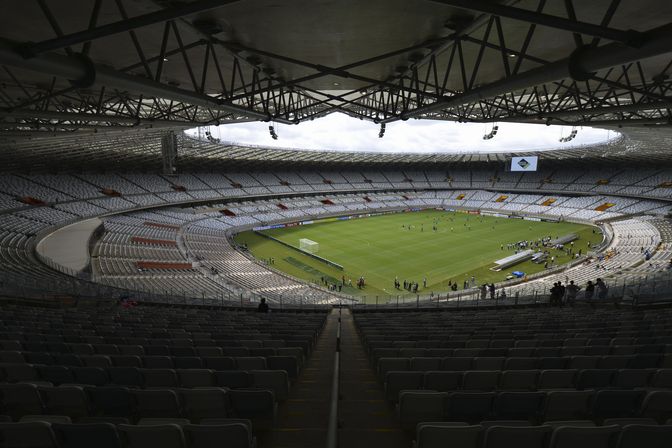Nomination: Mineirão
source: StadiumDB.com; author: michał
 A true temple of Brazilian football is certain to keep its legend alive after the 2014 World Cup. Not only will it host the tournament's semifinal, but its outer appearance remains as it used to be when it had capacity of 130,000 people.
A true temple of Brazilian football is certain to keep its legend alive after the 2014 World Cup. Not only will it host the tournament's semifinal, but its outer appearance remains as it used to be when it had capacity of 130,000 people.
Advertisement
When opened in 1965, the stadium was a sight to behold. It took six long years to build and no surprise, as it became the second largest stadium in the world when launched into operation.
Double-tiered stands had partial cover over the upper tier. The roof and its monumental supports created the concrete outer shell of the stadium, one of the largest of its kind. That very shell lasted decades without any change and even the perspective of hosting 2014 World Cup games didn't prompt any demolition. No wonder, because Mineirão grew to become one of the treasures of Brazilian modernism.
 Photo: Renato Cobucci, Secopamg
Photo: Renato Cobucci, Secopamg
Retaining the historical form may have been respectful to the stadium's heritage, but for the architects it created a whole new challenge. They had to extend the roof, reconfigure seating and fit all the new infrastructure inside – that demanded by FIFA as well as by new private operators of the ground.
Did it go well? Judge yourself by browsing the materials provided by BCMF Arquitetos, regarded as one of the most promising architectural practices in Brazil. Redefining the stadium's surroundings from regular parking lot to a friendly, functional and architecturally consistent space was without a doubt successful. New esplanade seemlessly satisfies the varying expectations, providing dynamic access from north and south in the same modernistic spirit as the stadium was created.
 Photo: Leonardo Finotti, BCMF Arquitetos
Photo: Leonardo Finotti, BCMF Arquitetos
Once nearing the stadium, fans (mostly those of Cruzeiro, the anchor tenant) may notice refined concrete surface of the stadium and entirely new facilities inside: toilets, concession stands and signage. To notice more changes on the outside, one has to fly over the stadium. The roof has been covered in photovoltaic panels and has a new transparent extension to ensure spectator comfort.
Creating the extension was tricky, because any external supports (provided in the initial renderings) would interfere with existing architecture's rhythm. This is why all of the steel web to support extra cover was hidden underneath the concrete shell, only visible to fans inside.
 Image: Leonardo Finotti, BCMF Arquitetos
Image: Leonardo Finotti, BCMF Arquitetos
Reconfiguration of the stands was done in similar fashion to operations in Rio de Janeiro and Fortaleza: lower terraces were demolished and the pitch lowered by 3.40m. This allowed to create a new tier that would be much closer to the action while providing satisfying sightlines.
 Photo: Secopamg
Photo: Secopamg
Corporate balconies were created along the sides, merging the new lower tier with upper one from 1965. With new wide seats the stadium now has over 62,000 capacity. This may be only half of the historical size, but comfort level and business model are well suited for contemporary needs.
Is this enough to win your sympathy? Remember you have time to vote for Stadium of the Year 2013 until February 22!
Advertisement

 StadiumDB
StadiumDB